Luxury India Tours
Experience Timeless Beauty and Mesmerizing Cultures
India is larger than life: a population that exceeds a billion, 23 official languages and more than a million square miles of land. But one common thread runs through it - India floods your senses from every direction.
In this country of filigreed cities and opulent palaces A&K shows you customs going back millennia and sites that inspire awe. In Varanasi, India's holiest city, stand beside the Ganges River at dusk and listen to rhythmic drumming as lantern-bearing priests bid the gods and goddesses a restful slumber. In Khajuraho, see all of life — joy, love, divinity, war — depicted in detail on every inch of its 85 Hindu and Jain temples. In Panna, take a private game drive in search of the graceful, elusive Bengal tiger and see nine UNESCO World Heritage Sites along the way.
With superb local guides and incomparable service, A&K takes you on a voyage of discovery through this unforgettable land. To experience this iconic destination for yourself, join one of our small group journeys or create your own Tailor Made journey of a lifetime.
Best Time To Go
October - MarchClimate Charts
Time Zone
ET +11 hours and 30 minutesFlights
Delhi (DEL); Mumbai (BOM)Ways to Experience Luxury Travel to India
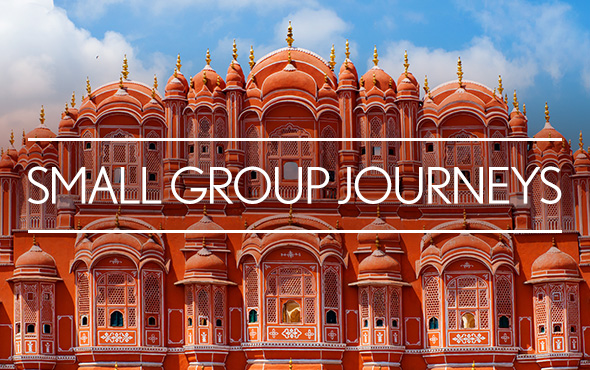
India Small-Group Tours
Experience A&K's best-in-class luxury small-group tours to India. Led by an acclaimed Resident Tour Director®, each unique journey is expertly designed to offer incredible insider access and an intimate small-group experience.

Journeys with Private Air
See and experience more on exclusive Wings Over the World Journeys. The ultimate small-group travel experience, these luxury journeys feature itineraries packed with insider access and the ease of privately chartered flights between destinations.
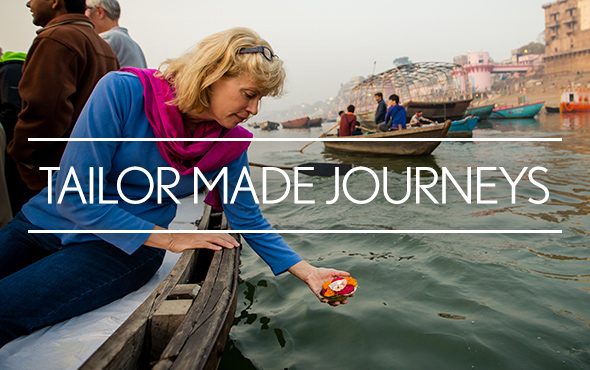
Tailor Made India Tours
Elevate your travel experience with private luxury Tailor Made tours to India. Created by our experts, each bespoke tour to India is designed just for you and your preferences with customized luxury Tailor Made adventures, accommodations, private air and more.
Explore More with A&K
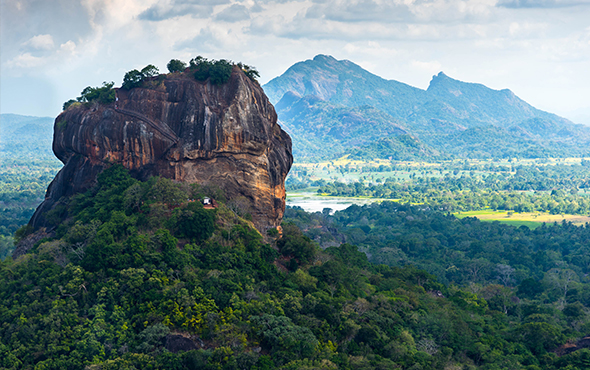
Sri Lanka
An island nation set just off of India's southeastern shores, Sri Lanka reveals its fascinating heritage through a series of spectacular sites. Captivating clifftop fortresses and towering temples juxtapose former colonial outposts and meandering tea plantations. World-class diving, exotic wildlife, vast beaches, lush rainforests and warm hospitality deepen the allure of this can't-miss destination.
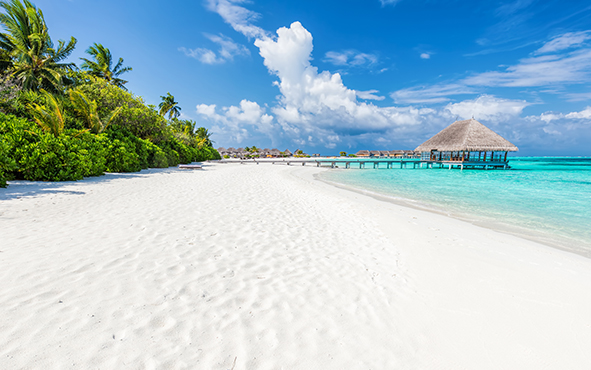
Maldives
Spanning 26 atolls and 1,190 islands south of India and west of Sri Lanka, the Maldives offer an unspoiled paradise for travellers in the know. The Maldives are renowned for sensational reef diving, pristine white beaches and luxurious resorts.
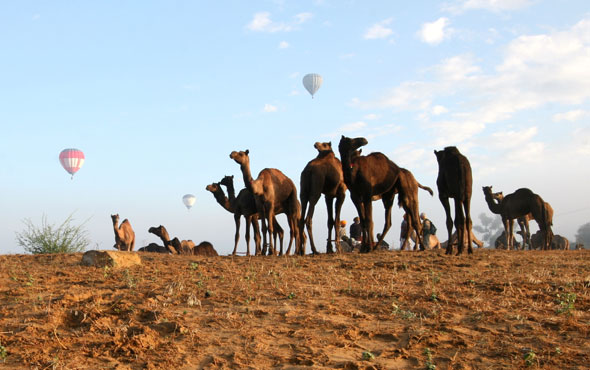
Immerse Yourself in the Annual Pushkar Fair
Experience the exuberance of this annual festival with dancing, acrobats, livestock market, camel races and tribal villagers in traditional dress.
Frequently Asked Questions
-
When is the best time to visit India?
October-March
-
What are the best places to visit in India?
Mumbai and Delhi are India’s two great contrasting cities — Mumbai is the country’s financial and technological hub, while Delhi is the seat of its government. Both pulse with an infectious and unmistakable energy. Rajasthan’s great cities of Udaipur, Jaipur and Jodhpur feature the great fortresses and palaces of the Mughal Empire, along with some of the most opulent hotels in the world. Just to the north lies the city of Agra and its most enduring monument, the Taj Mahal. Varanasi is India’s great spiritual center, where visitors can cruise the Ganges at sunrise and witness the spectacular aarti ceremony in the evening. For nature lovers, India’s national parks abound with opportunity to spot leopard, lion and elephant, along with the country’s living icon, the Bengal tiger. For India at its most serene, visit the backwater country of Kerala for the chance to cruise by rice barge along quiet shorelines dotted with friendly local people.Mumbai and Delhi are India’s two great contrasting cities — Mumbai is the country’s financial and technological hub, while Delhi is the seat of its government. Both pulse with an infectious and unmistakable energy. Rajasthan’s great cities of Udaipur, Jaipur and Jodhpur feature the great fortresses and palaces of the Mughal Empire, along with some of the most opulent hotels in the world. Just to the north lies the city of Agra and its most enduring monument, the Taj Mahal. Varanasi is India’s great spiritual center, where visitors can cruise the Ganges at sunrise and witness the spectacular aarti ceremony in the evening. For nature lovers, India’s national parks abound with opportunity to spot leopard, lion and elephant, along with the country’s living icon, the Bengal tiger. For India at its most serene, visit the backwater country of Kerala for the chance to cruise by rice barge along quiet shorelines dotted with friendly local people.
-
What are the places to visit in southern India?
Known among Indians as “God’s own country,” Kerala offers a peaceful retreat for locals and visitors alike on its tranquil backwaters. Madurai and Tiruchirappalli are known for their famous temples, including sixth-century Meenakshi and Tiruchirappalli Rock Fort, which contains two Hindu temples in a heavily fortified complex. Pondicherry and Chettinad, meanwhile, are a must for architecture buffs: Pondicherry retains many buildings from its days as a French colonial holding, and Chettinad is known for its decorated mansions, which number nearly 1,000.Known among Indians as “God’s own country,” Kerala offers a peaceful retreat for locals and visitors alike on its tranquil backwaters. Madurai and Tiruchirappalli are known for their famous temples, including sixth-century Meenakshi and Tiruchirappalli Rock Fort, which contains two Hindu temples in a heavily fortified complex. Pondicherry and Chettinad, meanwhile, are a must for architecture buffs: Pondicherry retains many buildings from its days as a French colonial holding, and Chettinad is known for its decorated mansions, which number nearly 1,000.
-
What should I wear when visiting India?
Choose versatile, casual clothing that can be layered if the weather requires. Smart casual attire is appropriate for evenings. Formal clothing is not necessary.Choose versatile, casual clothing that can be layered if the weather requires. Smart casual attire is appropriate for evenings. Formal clothing is not necessary.
-
When visiting religious sites, what types of clothing do I need to wear?
Visits to select religious sites require modest dress covering knees, shoulders, and upper arms. Guests may also be required to remove shoes.Visits to select religious sites require modest dress covering knees, shoulders, and upper arms. Guests may also be required to remove shoes.
-
What do I need to know before traveling to India?
India is a vast subcontinent with a hugely diverse array of cultures, landscapes, cuisines and religions. Northern India is an ideal way for first time travellers to see the country’s most iconic and notable sites, including the Taj Mahal, along with other major Mughal monuments and stays at some of the world’s most spectacular hotels. Return visitors who want to immerse themselves in local culture, temples and lush scenery will especially enjoy southern India, where incredible festivals and holiday celebrations take place throughout the year, including the Pushkar Fair, an annual livestock sale in Rajasthan which occurs in the fall; and Holi, the Festival of Colors, which celebrates love and spring.India is a vast subcontinent with a hugely diverse array of cultures, landscapes, cuisines and religions. Northern India is an ideal way for first time travellers to see the country’s most iconic and notable sites, including the Taj Mahal, along with other major Mughal monuments and stays at some of the world’s most spectacular hotels. Return visitors who want to immerse themselves in local culture, temples and lush scenery will especially enjoy southern India, where incredible festivals and holiday celebrations take place throughout the year, including the Pushkar Fair, an annual livestock sale in Rajasthan which occurs in the fall; and Holi, the Festival of Colors, which celebrates love and spring.
-
What is the history of the Taj Mahal?
The mausoleum of Empress Mumtaz Mahal, the beloved spouse of Shah Jahan who died in 1630, the Taj Mahal is often considered to be the "world's monument to love." The Taj complex comprises a forecourt, a lofty entrance, a charming formal Mughal garden with canals, and a central pool with a series of fountains, the tomb proper, and an attached mosque on the west, with its symmetrical counterpart on the east. The Taj is remarkable for its perfect proportions and rich pietra dura, with minute details executed with great skill. Often styled "a dream in marble," it is said to have taken at least 22 years to build.The mausoleum of Empress Mumtaz Mahal, the beloved spouse of Shah Jahan who died in 1630, the Taj Mahal is often considered to be the "world's monument to love." The Taj complex comprises a forecourt, a lofty entrance, a charming formal Mughal garden with canals, and a central pool with a series of fountains, the tomb proper, and an attached mosque on the west, with its symmetrical counterpart on the east. The Taj is remarkable for its perfect proportions and rich pietra dura, with minute details executed with great skill. Often styled "a dream in marble," it is said to have taken at least 22 years to build.
-
Where do I go to see Bengal Tigers?
A great place to see tiger in their natural habitat is Ranthambore National Park in Rajasthan, one of the biggest and most well-known parks in India and home to one of the largest tiger populations in the country. Panna National Park, located just outside Khajuraho, has undertaken extensive effort to grow its tiger population and is also an excellent locale for tiger-spotting.A great place to see tiger in their natural habitat is Ranthambore National Park in Rajasthan, one of the biggest and most well-known parks in India and home to one of the largest tiger populations in the country. Panna National Park, located just outside Khajuraho, has undertaken extensive effort to grow its tiger population and is also an excellent locale for tiger-spotting.
-
What is Pushkar fair about?
Already a year-round pilgrimage site for Hindus, the town of Pushkar in the northern Indian state of Rajasthan swells to bursting each November with some 200,000 livestock traders from around the country. Beyond the livestock sale, the fairgrounds teem with tribal villagers dressed in their traditional best who mingle with acrobats, fortune tellers, puppeteers, musicians and storytellers. Also on display are a bevy of sporting activities, including tug-of-war, and camel and steer races. All of this takes place simultaneously with the Hindu observation of Kartik Purnima, a sacred cleansing ceremony that offers a solemn counterpoint to the robust activities of the fair. The resulting milieu is a true extravaganza not found with most luxury travel in India, the kind of experience that makes a journey to India so deeply rewarding.Already a year-round pilgrimage site for Hindus, the town of Pushkar in the northern Indian state of Rajasthan swells to bursting each November with some 200,000 livestock traders from around the country. Beyond the livestock sale, the fairgrounds teem with tribal villagers dressed in their traditional best who mingle with acrobats, fortune tellers, puppeteers, musicians and storytellers. Also on display are a bevy of sporting activities, including tug-of-war, and camel and steer races. All of this takes place simultaneously with the Hindu observation of Kartik Purnima, a sacred cleansing ceremony that offers a solemn counterpoint to the robust activities of the fair. The resulting milieu is a true extravaganza not found with most luxury travel in India, the kind of experience that makes a journey to India so deeply rewarding.
-
Do I need a visa to visit India?
Yes. A tourist visa is required for U.S. and Canadian passport holders for entry into India and must be obtained prior to departure. There are currently two options available, an electronic visa (eVisa) and a traditional visa stamp.Yes. A tourist visa is required for U.S. and Canadian passport holders for entry into India and must be obtained prior to departure. There are currently two options available, an electronic visa (eVisa) and a traditional visa stamp.
 The Americas
The Americas Europe, Middle East and Africa
Europe, Middle East and Africa Australia, NZ and Asia
Australia, NZ and Asia













 The Americas
The Americas
 Europe, Middle East and Africa
Europe, Middle East and Africa Australia, NZ and Asia
Australia, NZ and Asia